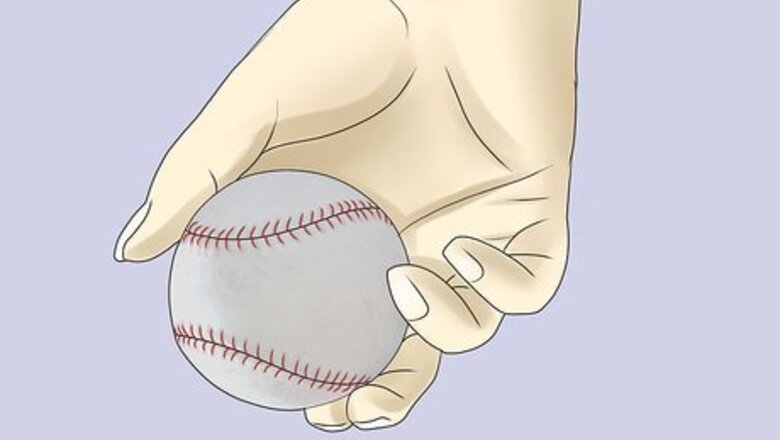
views
Learning the Grips
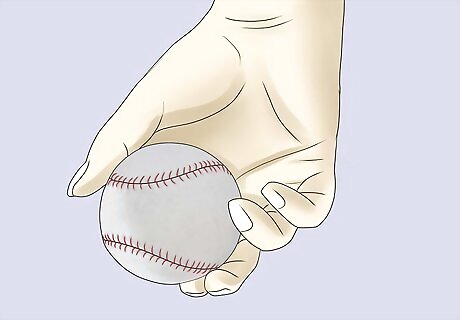
Choose your grip. There are many different ways to grip the ball (shown below). Keep the ball inside your glove while doing this, and don't begin your motion until you have a comfortable grip. The different grips are important to learn because they will help you to throw the ball in different ways.
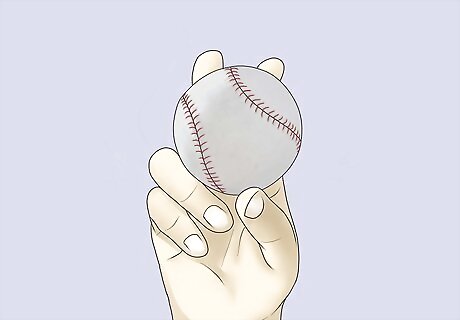
Try the Four-Seam Fastball. These pitches are the fastest in baseball, averaging around 95 mph (153 km/h). Spread your fingers slightly with the tips barely over the laces of the ball.
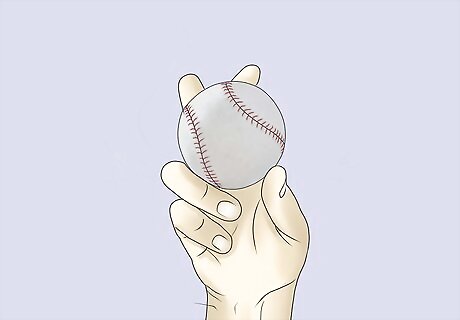
Try theTwo-Seam Fastball. This pitch will be slightly slower and less accurate than the four-seam, but it also curves as it reaches the batter, making it harder to hit. To hold, grip the ball along the seams with your index and middle finger.
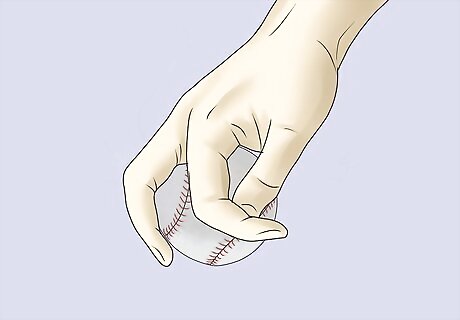
Try the Changeup. This pitch moves in the air quite a bit. Put your thumb and index finger in a circle, and then use your other three fingers to center the baseball.
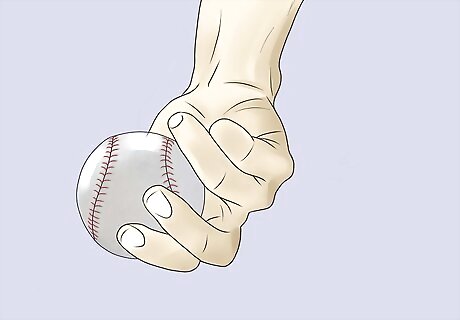
Try the Curveball. Keep your index finger and middle right and tight next to each other on the seams. Throw like you normally do but snap your wrist when throwing the curve.

Try the Slider. A slider seems like a fastball until the last second, when it curves to one side. Grip with your index and middle fingers across the seam at its widest point.
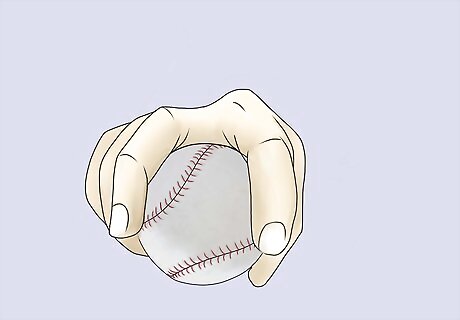
Try the Split Finger. This pitch will appear to be a fastball, but will drop as it nears the batter, making it difficult to hit. You need large hands to throw this pitch effectively. Hold the ball as if you would for the two-seam fastball. Rotate the ball toward yourself, so your fingers are along the horseshoe seam. Spread your fingers to the outside of the seams and place your thumb directly under the ball.
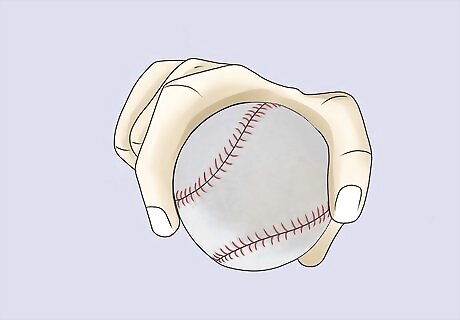
Try the Forkball. This ball is almost impossible to hit when thrown well. Jam the ball between your index and middle finger.
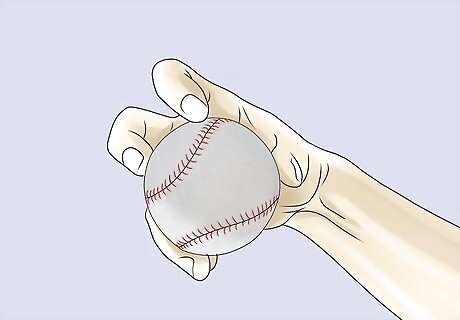
Try the Knuckleball. This ball will wiggle as it moves towards the batter. Dig your fingernails into the middle of the ball seams.
Pitching the Ball
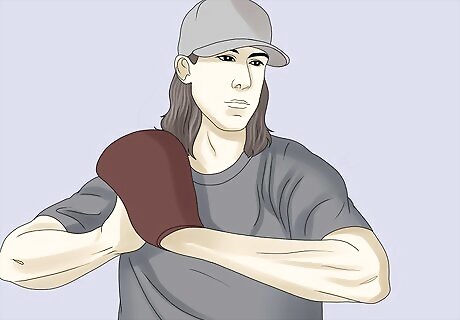
Get into wind-up position. Place both feet shoulder width apart standing straight on top of the mound with your toes dangling off the front, and face directly towards your catcher, your toes pointed towards him with your heels on the rubber. Hold your glove in front of your chest, with your elbows resting on both sides of your torso. Some pitchers prefer to stand with their stride leg slightly behind their other leg. This is optional and may not work for everyone. Your should start in the stretch position when there are runners on the bases. Place your feet so they face third base if you throw right-handed or first base if you throw left-handed. The stretch is a faster way to pitch and you can maintain more balance, resulting in more control. Your right foot should be placed against the rubber, with your other foot one to two inches in front. This will enable you to get a full rotation with your hips, which will make you throw harder. If you start with your stride leg slightly back, simply shift your weight to that back leg.
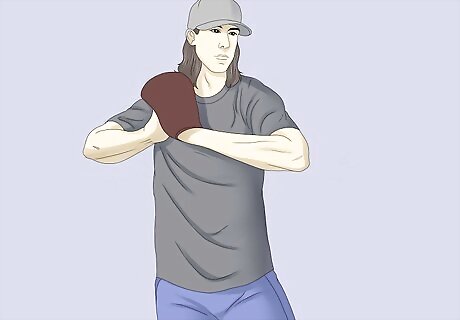
Make a small step with your left foot to the left. Shift your weight to your left foot, allowing you to lift your right foot and place it beside the rubber (or pivot your right foot into this position, whichever is more comfortable), so that the right side of your right foot is pressing against the mound.
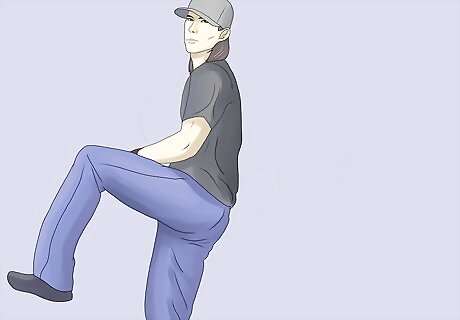
Lift your left leg to the point where your thigh becomes parallel with the ground or higher. Your body should have begun to move with your right foot in the previous step, and at the end of this step your body should be facing third base instead of home plate.
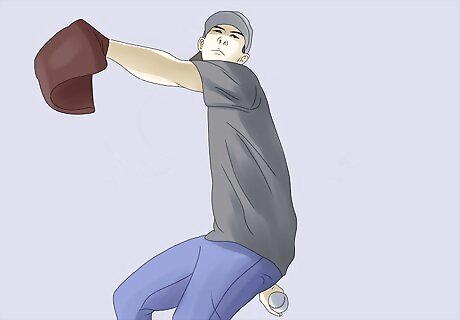
Break your arms in a downward semi-circular motion. Your front arm should stay closed and your front elbow should be at a comfortable angle (45-90 degrees). Your throwing arm should hit what's called your "sweet spot" which is the point where you throwing arm is at its lowest point during your motion. Normally, it is at the point where your arm is nearly perpendicular to the ground, with a slight bend in your elbow. Ensure that your body stays facing third base through this step, and that you hit your sweet spot before continuing to the next step.
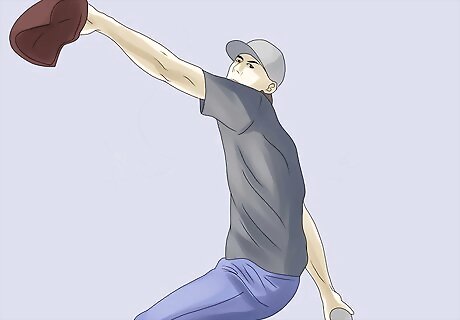
Lower your leg as close to the ground without touching it, and then stride outwards. Do this at the same time as moving your arms (the previous step). To lower your leg, bend your right knee until your left leg is close to the ground without touching the ground. Don't stride outwards until you have lowered your left leg fully or you will lose substantial power. Your front leg should have a curved "down and out" sweep towards home. As you are doing this, begin to raise your throwing arm out of the sweet spot so that is is parallel to the ground, without allowing your elbow to drop towards your hip.
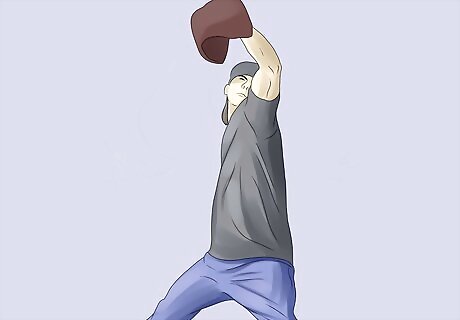
Land your front foot at a closed angle. In other words, if landing your foot pointing at the plate is a 90 degree angle, land your foot pointing at a 75 degree angle. This will get your body into a power position. Your power position is the position where your legs are fully extended with your hips and arms still closed, ready to hurl your arm towards the plate.
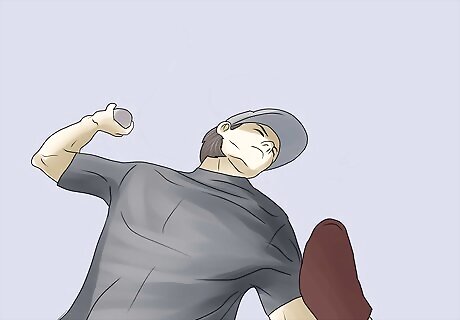
Push off with your back foot, out of the power position. Pull forward with your front foot by pivoting from that 75 degree angle into a 90 degree angle. Ensure that you make this pivot before you swing open your upper body and pull your left arm towards first base. Pivoting early allows you to generate power with your hips, and create more of a whip action for your right arm. Your throwing elbow should be aligned with your shoulders (horizontally of course) through this step. The most common mistake pitchers make is to open their arms before their hips, which removes the power generated from their legs, causing pitchers to have less velocity, and increase the stress applied to their arms.
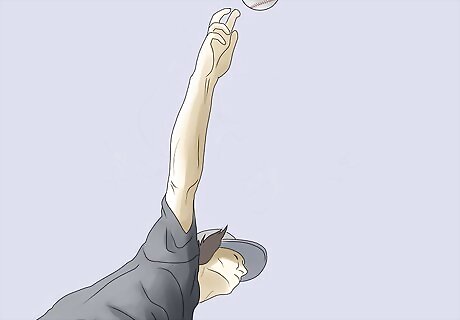
Extend your pitching arm as far as you can, and let the ball glide off your wrist. Do not snap your wrist as this can cause injury. Your wrist should not guide the ball, but rather the ball guides your wrist. During your motion, it is beneficial to be aware of your wrist. As you move your arm from your sweet spot, your wrist should be pulled back, cocking the ball in your hand. Then, as you release the ball, the ball should glide off of your wrist, finishing with your wrist fully flexed.
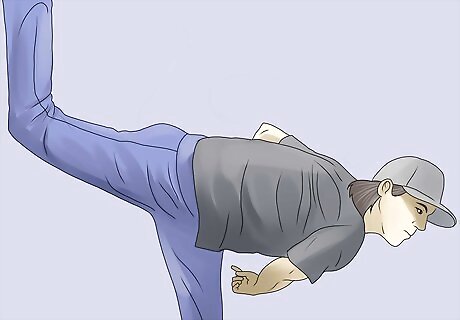
Follow through. Extended your arm as far you can and allow your back leg to lift up from the forward momentum, and place it on the mound to get in a fielding position.
Other Pitching Basics
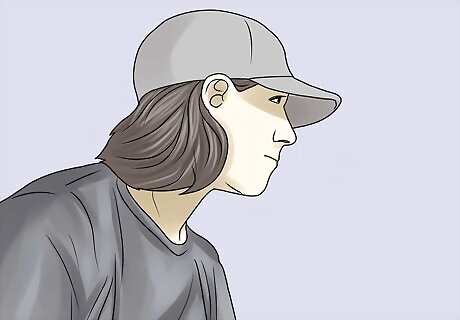
Remember to stay balanced. Pitching is really a series of movements that the pitcher does without thinking. The key to a great pitch is balance--without balance, your throw will more than likely be rather off kilter.
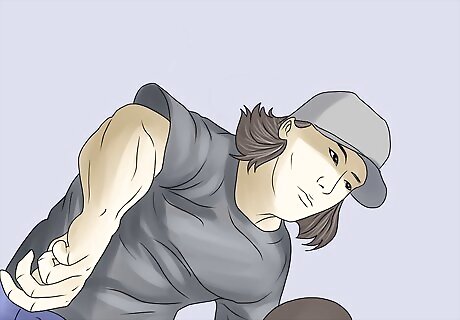
Try to be consistent. To be most effective, try to maintain a consistent throwing angle for all of your pitches. Some pitchers throw more overhand throwing a curveball or dip to sidearm while throwing a slider. While this may give you better control or command or your pitch, it can easily tip off the batter as to what pitch you are throwing. Having a consistent arm angle keeps the batter guessing. Focus on consistently throwing strikes before you try to improve your speed.
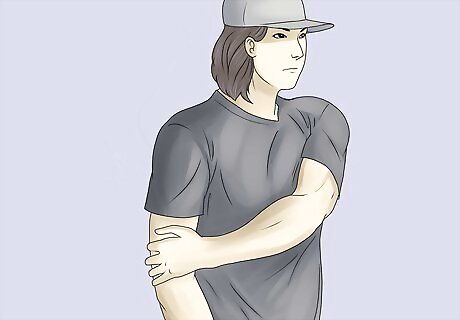
Keep your pitching arm from getting too sore. Start off slow. Wrap ice around your arm and chest to slow down the buildup of lactic acid (the buildup of lactic acid causes soreness). Run for 30 minutes after you pitch. This will get your blood circulating and help push out the lactic acid that might form in your arm. Tom Seaver Tom Seaver, Baseball Legend and Hall of Fame Pitcher Mastering pitching mechanics is crucial but mental focus also plays a key role. Approach each pitch with a purpose and visualize your desired location and movement. Set up on the rubber with confidence, come set, and drive forward with your entire body towards the plate.












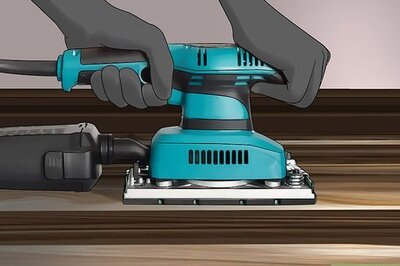

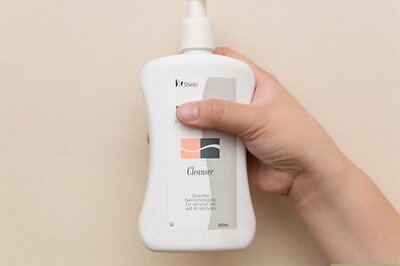
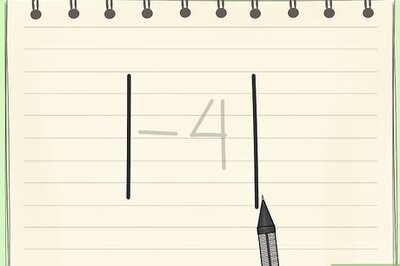
Comments
0 comment